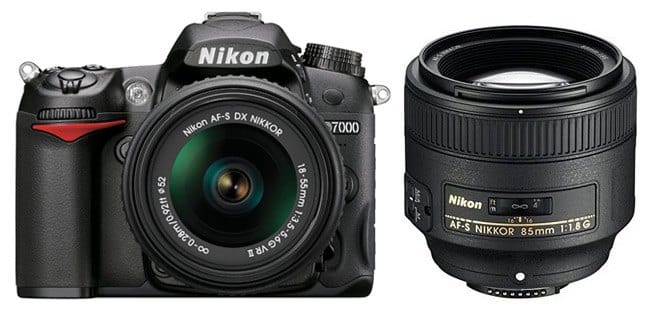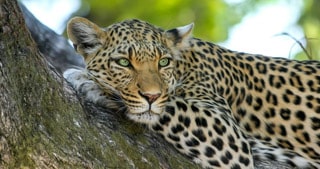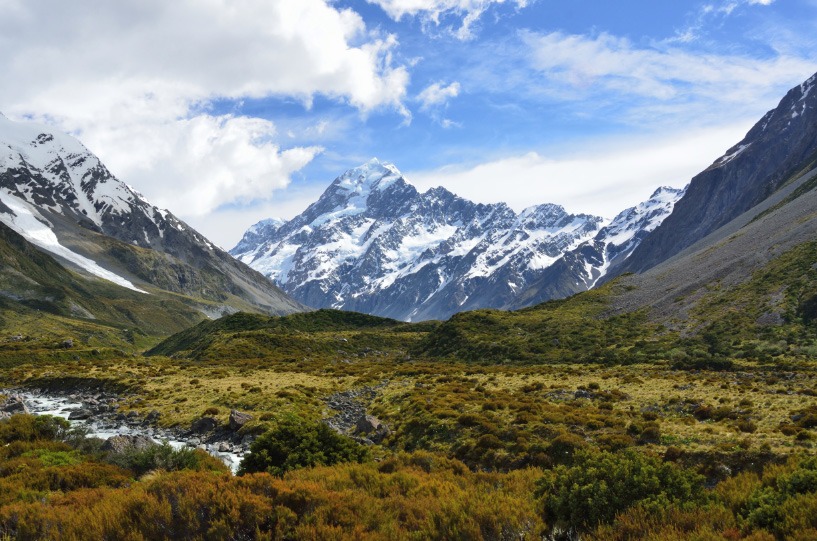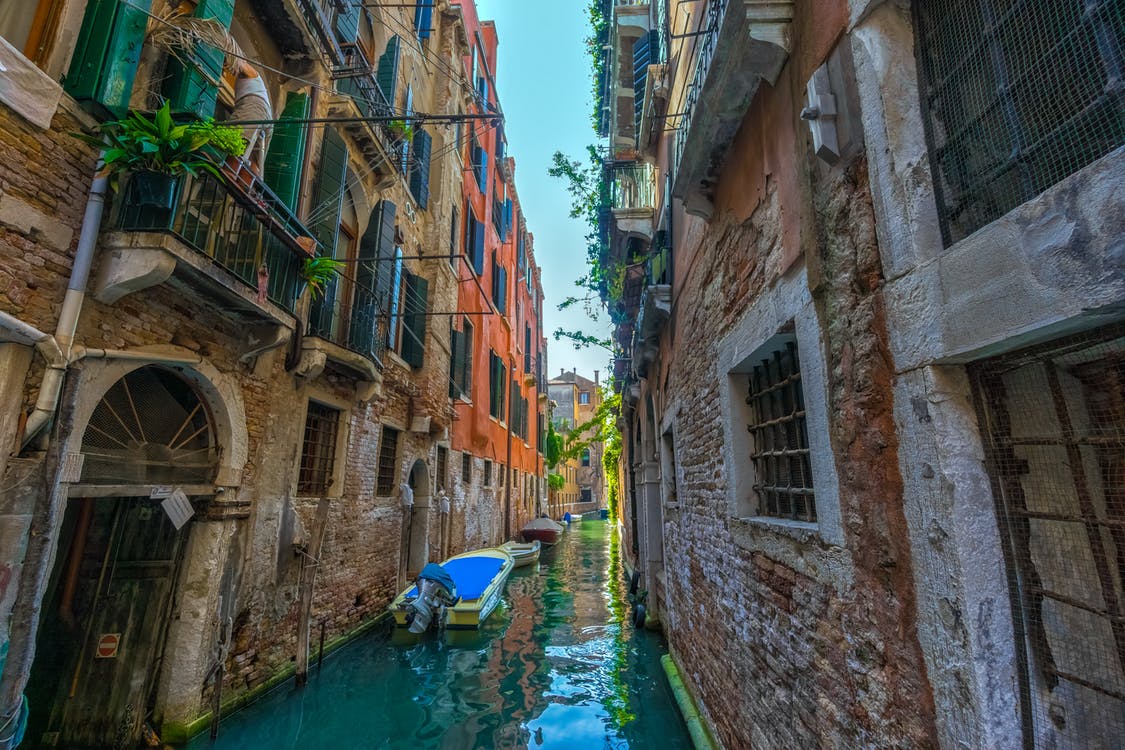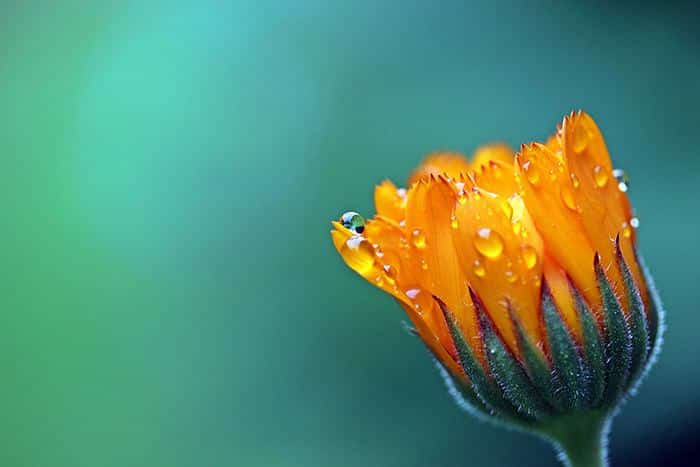Take a look at our recommendations for the best lenses for the Nikon D7000, whatever you situation. If you’re just getting started with photography we know it can be challenging to determine which lenses are compatible with your D7000. Especially when you’ve got to try and narrow down which are the best lenses from over 150 options!
How can I tell what lenses are compatible with a Nikon D7000?
The D7000 is a Nikon DX camera (aka: Crop Sensor Camera) and can accept both DX and FX lenses (FX stands for full frame) so you don’t ever have to worry about a lens not fitting.
According to Nikon’s Official Compatibility chart the D7000 will work with all of Nikon lens types other than AF-P lens.
| Camera | AI lens | AF-D lens | AF-S lens | AF-P lens | E-Type lens |
| D7000 | Full Compatibility | Full Compatibility | Full Compatibility | Not Compatible | Full Compatibility |
So if you’re wondering what lenses fit the D7000, the answer is just about any Nikon F-mount lens will work with full compatibility. Since the Nikon D7000 has a F-mount lens attachment any NIKKOR or third-party lens designed for the F-mount will physically fit it. And aside from those with the AF-P focusing technology, they will be fully compatible with your D7000.
If you’re not familiar with Nikon’s F mount, that’s the reference to the physical attachment of the lens to the camera body. In addition to that, to determine the compatibility of a lens with your Nikon you would then look to see if it’s a DX lens or an FX lens, which refers to the size of the sensor in the camera.
The F mount is universal between both sensor types, meaning the lens can physically attach. Although DX lenses aren’t something we would normally recommend on a FX (full frame) camera. One reason is because of vignetting around the edge of the image. Again, since the Nikon D7000 is a DX camera both lens types will be compatible.
It also has an AF motor built-in unlike cheaper Nikon DSLRs, so you can use older lenses without the AF motor and still get auto focus.
How to tell if a lens fits and focuses on the D7000?
Nikon -> If there’s “DX” in the name, it’s good
Sigma -> “DC” stands for crop cameras, like the D7000
Tokina -> Also uses “DX” in their names
Tamron -> “Di-II” means it’s made for only crop cameras, “Di” works on all Nikon DSLRs
You can also ask us directly if you’re still confused after reading this lens guide.
List of Nikon D7000 lenses we recommend to buy:
We cover these D7000 lenses in depth below, but in case you’re looking for full specifications and reviews, here’s an organized list. Prime and zoom lenses, from widest to longest.
Best Nikon D7000 Portrait/Wedding/Low Light Lenses:
- Nikon 35mm f/1.8G AF-S – Best lens for everything and cheap
- Nikon 50mm f/1.8G AF-S – Best all-around lens and also cheap
- Nikon 85mm f/1.8G AF-S – Best for portraits and the sharpest lens
Best Nikon D7000 Telephoto/Action Lenses:
- Nikon 55-300mm f/4.5-5.6G ED VR – Budget telephoto zoom lens
- Tamron 70-200mm f/2.8 DI VC USD – Ideal for portraits & events
- Sigma 150-600mm f/5-6.3 DG OS HSM – Zoom lens up to 600mm
Best Nikon D7000 Wide Angle Lenses:
- Tokina 11-16mm f/2.8 Pro DX II – Best wide angle zoom lens
- Sigma 18-35mm f/1.8 DC HSM – Best aperture lens but expensive
Best Nikon D7000 Walkaround/All-around Lenses:
- Sigma 18-300mm f/4-5.6 DC OS HSM – Best all-around lens choice
- Sigma 17-70mm f/2.8 DC HSM – Less zoom but better aperture
- Sigma 30mm f/1.4 DC HSM – Prime lens with better quality images
Best Nikon D7000 Macro Lenses:
Nikon 40mm f/2.8G Micro – Best DX Micro Lens
Nikon 105mm f/2.8GIF ED VR Micro – Cheap 100mm macro lens
If you decide to buy anything through our Amazon links, you automatically support our work as we receive a small commission and it’s what allows us to write these guides.
The D7000 was first released back in 2010 but it is still well within the top 10 most used Nikon DSLR cameras on Flickr (stats).
Whether you already own it or are about to get one, you need to understand that image quality depends way more on the lenses you use, rather than the camera. All the lenses we review here are great options, so you don’t have to worry about one of them degrading the abilities of your D7000.
Wideangle lenses
Macro lenses
Telephoto lenses
Standard lenses
Best D7000 Lenses for Portraits, Weddings, Low Light and General Photography

Best for everything and cheap -> Nikon 35mm f/1.8G AF-S
Best all-around and also cheap -> Nikon 50mm f/1.8G AF-S
Best for portraits and sharpest -> Nikon 85mm f/1.8G AF-S
One major question people have is if the Nikon D7000 is good for wedding photography? The answer is a definite ‘Yes.’ Although you’ve got to make sure you’re pairing it with a good lens. The sensor size, megapixel count, and ISO range of the D7000 will give you good results with wedding photography as long as you have a lens that will let in enough light. This will help the low light performance of the camera itself, so you have the freedom to shot with the ISO and shutter-speed you need.
Using a lens with a big aperture allows you to shoot in low light and makes your background look blurry, giving you a really professional look because your subject stands out so much. This is one of the main things you need to look at when trying to find a lens for wedding photography.
Why do we recommend prime lenses here? They’re sharper, cheaper, smaller than zooms and are simply the most (cost) effective way of reaching that high quality feel of your shots. Your skills and experience do play a big role of course, but it’s all so much better when you got the gear capable of delivering.
1. Nikon 35mm f/1.8G AF-S DX
The Nikon 35mm f/1.8G is the most affordable Nikon prime lens, offers superb image quality and fast auto focus. If you’re looking to buy your first lens after the kit 18-55mm, you’ll be amazed by the quality as prime lenses are top notch!
Thanks to aperture f/1.8 it will make your portrait shots look more professional due to the shallow depth of field and lovely bokeh. Colors and sharpness are also really good for a lens this price. It’s a perfect choice for a whole lot of different styles, from night time, portraits, kids and pets running, nature to traveling and wedding photography.
You can buy it at Amazon or see more reviews here.
Pros
- most affordable Nikon prime lens
- superb image quality
- fast auto focus
- great sharpness
Cons
- 35mm lenses distort portraits a little bit
- doesn't include images stabilization
| Key Lens Specs for the Nikon AF-S DX Nikkor 35mm F1.8G | |
| Lens Name | Nikon AF-S DX Nikkor 35mm F1.8G |
| Lens mount | Nikon F (DX) |
| Lens type | Prime lens |
| Maximum aperture | F1.8 |
| Image stabilization | No |
| Autofocus | Yes |
| Weight | 210 g (0.46 lb)^ |
| Length | 53 mm (2.07″)^ |
| Filter thread | 52 mm |
| Diaphragm blades | 7 |
| Min Focus | 0.30 m (11.81″) |
| Max magnification | 0.16× |
| Materials | Plastic barrel, metal mount |
| Price Range | $ | Least expensive price range for lenes |
| ^Better than Average, when compared to over 750 other lenses | |
2. Nikon 50mm f/1.8G AF-S
Right after the lens above, the Nikon 50mm f/1.8G is our second favorite prime for both newcomers to photography and more advanced users looking for quality in a lightweight lens.
If you often find yourself using the 18-55mm lens more or less near 50mm, this lens was made for you. Not only is quality years ahead of the kit zoom, it also focuses faster and lets you go all the way to f/1.8! Their prices are almost identical, yet we recommend you to go with the 50mm if you prefer a little bit tighter shots (15mm difference between the two lenses) and want slightly better looking bokeh.
You can buy it at Amazon or see more reviews here.
Pros
- quality lightweight lens
- fast f/1.8 aperture
- wonderfully sharp image
Cons
- 50mm doesn't give you a ton of reach
- some Chromatic aberration
| Key Lens Specs for the Nikon AF-S Nikkor 50mm F1.8G | |
| Lens Name | Nikon AF-S Nikkor 50mm F1.8G |
| Lens mount | Nikon F (FX) |
| Lens type | Prime lens |
| Maximum aperture | F1.8 |
| Image stabilization | No |
| Autofocus | Yes |
| Weight | 185 g (0.41 lb)^ |
| Length | 53 mm (2.07″)^ |
| Filter thread | 58 mm |
| Diaphragm blades | 7 |
| Min Focus | 0.45 m (17.72″) |
| Max magnification | 0.15× |
| Materials | |
| Price Range | $ | Least expensive price range for lenes |
| ^Better than Average, when compared to over 750 other lenses | |
3. Nikon 85mm f/1.8G AF-S
We’ll keep it simple. If you’re into wedding, concert, portrait or night time photography, get the Nikon 85mm f/1.8G AF-S and you’ll never look back.
Why? It’s the focal length, there’s just something magical about 85mm for shots of people. Then there’s the awesome bokeh with fast f/1.8 aperture and sharp results. It’s more expensive but definitely worth it if you’re looking for that one lens to take your shots to the next level. Because it’s noticeably longer, it’s not as good for street, indoor and walk-around purposes, but is ideal if you can’t always be close to your subject.
You can buy it at Amazon or see more reviews here.
Pros
- fast f/1.8 aperture
- great focal range
- beautiful bokeh
- great in low light
Cons
- more expensive
- larger and heavier
| Key Lens Specs for the Nikon AF-S Nikkor 85mm F1.8G | |
| Lens Name | Nikon AF-S Nikkor 85mm F1.8G |
| Lens mount | Nikon F (FX) |
| Lens type | Prime lens |
| Maximum aperture | F1.8 |
| Image stabilization | No |
| Autofocus | Yes |
| Weight | 350 g (0.77 lb)^ |
| Length | 73 mm (2.87″)^ |
| Filter thread | 67 mm |
| Diaphragm blades | 7 |
| Min Focus | 0.80 m (31.5″) |
| Max magnification | 0.124× |
| Materials | |
| Price Range | $ | Less expensive than majority of lenes |
| ^Better than Average, when compared to over 750 other lenses | |
Best D7000 Lenses for Wildlife, Sports, Birds and Action Photography
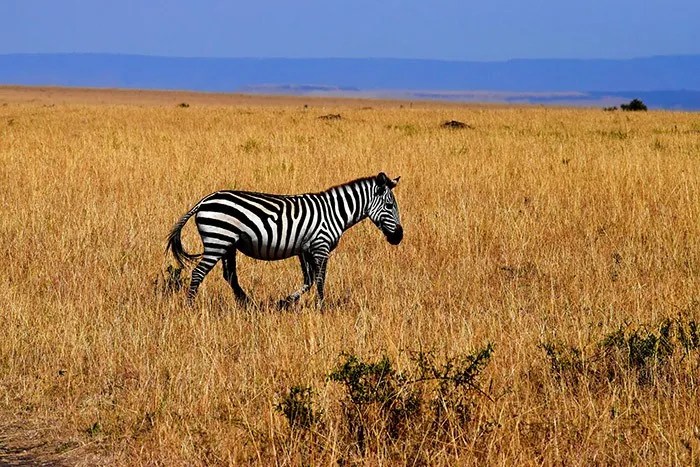
Budget telephoto zoom -> Nikon 55-300mm f/4.5-5.6G ED VR
Ideal for portraits, events, and weddings – Tamron 70-200mm f/2.8
Zoom up to 600mm -> Sigma 150-600mm f/5-6.3 DG OS HSM
The Nikon D7000 camera is excellent for sports and wildlife photography thanks to its fast AF, 6fps and build quality. That’s way better than the D5500 and lower series. You might not think it’s important but since a lot of telephoto activity happens outdoors you’ll often find yourself in different weather situations (rain, dust etc.)
Because telephoto lenses tend to be a bit heavier and also get you close to the subject, you’ll want to make sure you get one with Vibration Reduction. Basically, if you’re not totally stable the lens compensates for slight movements and makes the shot less blurry, but this won’t help if your main subject is moving fast, only a faster shutter speed will.
Cheaper telephoto lenses also don’t have large apertures and are usually between f/4 and f/5.6. This is not good for indoor action so remember to raise the ISO up to 1,600 – 3,200 to get acceptable shots, mainly for viewing on an computer monitor.
1. Nikon 55-300mm f/4.5-5.6G ED VR DX
 The Nikon 55-300mm f/4.5-5.6G is great if you’re looking to start with something cheap, yet way better than the 55-200mm. It’s got better image quality, colors and contrast, and 100mm more zoom.
The Nikon 55-300mm f/4.5-5.6G is great if you’re looking to start with something cheap, yet way better than the 55-200mm. It’s got better image quality, colors and contrast, and 100mm more zoom.
Bokeh also looks better due to 9 diaphragm blades compared to “just” 7 on the 200mm above, and it also focuses quicker and more silent. However, both lenses will often hunt in low light so be ready to do a bit of manual focusing from time to time. Outdoors, this is rarely an issue. Build quality has also been improved and feels a lot less cheap/plastic, but in return the lens weighs more.
You can buy it at Amazon or see more reviews here.
Pros
- large zoom for a budget lens
- 9 diaphragm blades for good bokeh
Cons
- hunts in low light
| Key Lens Specs for the Nikon AF-S DX Nikkor 55-300mm f/4.5-5.6G ED VR | |
| Lens Name | |
| Lens mount | Nikon F (DX) |
| Lens type | Zoom lens |
| Maximum aperture | F4.5–5.6 |
| Image stabilization | Yes (4 stops claimed) |
| Autofocus | Yes |
| Weight | 530 g (1.17 lb)^ |
| Length | 123 mm (4.84″) |
| Filter thread | 58 mm |
| Diaphragm blades | 9^ |
| Min Focus | 1.40 m (55.12″) |
| Max magnification | 0.28× |
| Materials | Plastic barrel, metal mount |
| Price Range | $$ | Less expensive than majority of lenes |
| ^Better than Average, when compared to over 750 other lenses | |
2. Tamron 70-200mm f/2.8 Di VC USD
We used to love Nikon’s 70-200mm zoom, but after trying out Tamron’s the price just isn’t worth it unless you need top build quality.
The Tamron 70-200mm f/2.8 is built very well and feels sturdy as a $1,500 lens should, but we couldn’t find anything better about the Nikon other than better construction if you often shoot in rain and harder conditions and don’t want to risk your equipment. Quality, sharpness and colors are the same, and their Vibration Compensation (VR at Nikon) works flawlessly as well.
70-200mm is ideal for portraits, events, concerts, weddings, sports and even landscape, on both DX and FX cameras. So you don’t need to worry about pairing your Nikon D7000 with this Tamron lens.
You can buy it at Amazon or see more reviews here.
Pros
- well built
- less expensive than Nikon's version
Cons
- not weather sealed
| Key Lens Specs for the Tamron SP 70-200mm F/2.8 Di VC USD | |
| Lens Name | Tamron SP 70-200mm F/2.8 Di VC USD |
| Lens mount | Canon EF, Nikon F (FX), Sony/Minolta Alpha |
| Lens type | Zoom lens |
| Maximum aperture | F2.8 |
| Image stabilization | Yes |
| Autofocus | Yes |
| Weight | 1470 g (3.24 lb) |
| Length | 197 mm (7.76″) |
| Filter thread | 77 mm |
| Diaphragm blades | 9^ |
| Min Focus | 1.30 m (51.18″) |
| Max magnification | 0.13× |
| Materials | |
| Price Range | |
| ^Better than Average, when compared to over 750 other lenses | |
3. Sigma 150-600mm f/5.6-6.3 DG OS HSM
Want to photograph wildlife, the moon or anything far far away? The Sigma 150-600mm DG OS HSM, released back in 2015, is your cheapest way of ever reaching 600mm with acceptable quality.
It features Optical Stabilization which is a must for something so long, HSM for fast and accurate focusing and also fits on FX models. As far as focusing goes, it’s super quick and doesn’t hunt. You can have the best image quality in the world but if the AF system sucks, what’s the point if everything is out of focus. Oh, the field of view of this lens is equivalent to 225-900mm on the D7000. That’s nine hundred! Hmm…the price is also nine hundred bucks, so you’re literally paying a dollar for every millimeter.
Construction wise, the lens feels solid and is something you can use outdoors in tougher situations with no stress.
Anything bad? The f/6.3 makes it unusable for indoor sports, and it’s relatively heavy to carry around at over 6 pounds (1930g). If you’ve got a cheap tripod, you definitely have to buy something that can carry way more weight. Because of the weight you’ll definitely have to rest every hour or so if you’re not used to carrying around such a big lens (assuming you shoot hand-henld).
You can buy it at Amazon or see more reviews here.
Pros
- cheap 600mm zoom
- good image quality
- quick autofocus
Cons
- quality drops off at extreme focal length
- unusable for indoor sports
- heavy
| Key Lens Specs for the Sigma 150-600mm F5-6.3 DG OS HSM | C | |
| Lens Name | Sigma 150-600mm F5-6.3 DG OS HSM | C |
| Lens mount |
Canon EF, Nikon F (FX), Sigma SA Bayonet, Sony/Minolta Alpha
|
| Lens type | Zoom lens |
| Maximum aperture | F5–6.3 |
| Image stabilization | Yes |
| Autofocus | Yes |
| Weight | |
| Length | 260 mm (10.24″) |
| Filter thread | 95 mm |
| Diaphragm blades | 9^ |
| Min Focus | 2.80 m (110.24″) |
| Max magnification | 5× |
| Materials | Composite with metal sealed mount |
| Price Range |
$$$ | Within price range for the majority of lenses
|
| ^Better than Average, when compared to over 750 other lenses | |
Best D7000 Lenses for Landscape, Wide Angle, Architecture and Indoor Photography

Best wide zoom -> Tokina 11-16mm f/2.8 Pro DX II
Best aperture but expensive -> Sigma 18-35mm f/1.8 DC HSM
As we talked about above, the Nikon D7000 is a DX camera (1.5x crop factor) which means that any lens you put on acts as if it was 1.5x longer than it actually is (ANY lens, even those made for FX models). This happens because the sensor is 1.5x smaller than full frame and is a standard for all DSLR cameras under $1,500. You can read more about the crop factor here.
How does this affect you? Well, telephoto photography is awesome with the 1.5x factor because you can get closer without buying more expensive lenses, but for wideangle this isn’t good because extreme wide angles become… not so extreme. You can try Nikon’s lens simulator to see the difference.
To counter the crop factor, Nikon and third-party companies make super wide lenses with the 1.5x in mind, so when you put them on they’re still wide enough for whatever it is that you require. They’re also cheaper and lighter than comparable FX lenses. The Tokina 11-16mm f/2.8 is our favorite affordable wideangle lens, because it’s still wide when mounted on the D7000 (11-16mm acts as if it’s a 16.5-24mm lens, just multiply the numbers by 1.5x).
1. Tokina 11-16mm f/2.8 Pro DX II
It looks cool, it feels solid, it’s got an f/2.8 aperture and most importantly, gives good results for wideangle photography. The Tokina 11-16mm f/2.8 Pro DX II is a popular choice, mostly for Nikon because their wide zoom is more expensive and slower. No issues with auto focusing or anything on the D7000.
Not only is the lens good for nature, real estate and indoor photography, the f/2.8 also allows you to use it for long exposure photography at night. It features two aspheric and two low-dispersion elements to reduce the amount of ghosting and flare, a common issue with wider lenses.
You can buy it at Amazon or see more reviews here.
Pros
- f/2.8 aperture great for lowlight conditions
- great auto focus
Cons
- limited zoom range
| Key Lens Specs for the Tokina AT-X Pro 11-16mm f/2.8 DX II | |
| Lens Name | Tokina AT-X Pro 11-16mm f/2.8 DX II |
| Lens mount | Canon EF-S, Nikon F (DX), Sony/Minolta Alpha |
| Lens type | Zoom lens |
| Maximum aperture | F2.8 |
| Image stabilization | No |
| Autofocus | Yes |
| Weight | 560 g (1.23 lb)^ |
| Length | 89 mm (3.51″)^ |
| Filter thread | 77 mm |
| Diaphragm blades | 9^ |
| Min Focus | 0.30 m (11.81″) |
| Max magnification | |
| Materials | |
| Price Range | $$ | Less expensive than majority of lenes |
| ^Better than Average, when compared to over 750 other lenses | |
2. Sigma 18-35mm f/1.8 DC HSM
To have a zoom lens with f/2.8 is awesome. To have f/1.8… that’s just asking for too much. Luckily, Sigma listened.
The Sigma 18-35mm f/1.8 DC HSM is designed for DX cameras like the D7000 and gives you a length that’s excellent for any wide to standard situation, even in low light. That includes weddings, traveling (still good as a kit lens), streets, indoor and general photography.
Instead of owning 3 separate lenses that might not even have f/1.8, you’re able to zoom through all in less than a second. Best part, the max. aperture doesn’t get smaller at 35mm. This Sigma fine piece of glass also delivers optically excellent images with top colors and sharpness, and has a HSM (Hyper Sonic Motor) to make it better for focusing on moving targets as well. The only downside is that it’s relatively heavy at 28.7 oz (809g). Price? $800. It’s worth far more though.
You can buy it at Amazon or see more reviews here.
Pros
- really fast f/1.8
- nice standard range zoom
- aperture stays large even at the extremes
Cons
- a bit heavy
| Key Lens Specs for the Sigma 18-35mm F1.8 DC HSM Art | |
| Lens Name | Sigma 18-35mm F1.8 DC HSM Art |
| Lens mount |
Canon EF-S, Nikon F (DX), Pentax KAF, Sigma SA Bayonet, Sony/Minolta Alpha DT
|
| Lens type | Zoom lens |
| Maximum aperture | F1.8 |
| Image stabilization | No |
| Autofocus | Yes |
| Weight | 810 g (1.79 lb) |
| Length | 121 mm (4.76″) |
| Filter thread | 72 mm |
| Diaphragm blades | 9^ |
| Min Focus | 0.28 m (11.02″) |
| Max magnification | 0.23× |
| Materials | |
| Price Range |
$$$ | Within price range for the majority of lenses
|
| ^Better than Average, when compared to over 750 other lenses | |
Best D7000 Lenses for Traveling, Walkaround, Zoom and Everyday Photography

Best all-around choice -> Sigma 18-300mm f/3.5-6.3 DC OS HSM
Less zoom better aperture -> Sigma 17-70mm f/2.8-4 OS HSM
Prime with better quality images -> Sigma 30mm f/1.4 DC HSM
An all-around lens does exactly what you think; it’s something you can take with you regardless of where it is that you’re going. A lot of people prefer owning one do it all lens, and sometimes that’s a better choice if you often travel and can’t carry around a bunch of different lenses. When traveling, you might not always have the time to switch between them, and you can also risk getting your gear wet/dusty.
But there’s one drawback; the quality of do it all zoom lenses is not as good as primes. We’re not saying they suck or anything, but their apertures are nowhere near as big and quality differences can be seen when viewing bigger prints. A zoom lens needs to have so many different elements inside, even for moving, that you can’t expect to get the highest quality.
However, we found a lens that simply tops every other Nikon all-around lens! That’s the Sigma 18-300mm f/3.5-6.3 DC OS HSM. Check out the ePhotozine review that also for more detailed charts, but to give it to you short, the lens is worth every dollar.
1. Sigma 18-300mm f/3.5-6.3 DC OS HSM

Continuing from above, the Sigma 18-300mm f/3.5-5.6 DC OS HSM is the perfect travel lens. Take it out for walks, or use it as your only lens when travelling all over the world.
It does get softer at 300mm as expected, but stopping down to ~f/8 greatly improves sharpness. Unfortunately this means it’s not good indoors at ~300mm because you have to shoot with really long shutter speeds. This can be “fixed” by enabling the Optical Stabilization or using a higher ISO speed, but yeah….noise and all, you know. If only life was that easy. We used to really like Nikon’s 18-140mm lens, but for the same price you don’t nearly get as much value.
You can buy it at Amazon or see more reviews here.
Pros
- perfect travel lens
- better value than a Nikon 18-140mm
Cons
- softens at 300mm
- not great for indoors
| Key Lens Specs for the Sigma 18-300 F3.5-6.3 DC Macro OS HSM | C | |
| Lens Name | Sigma 18-300 F3.5-6.3 DC Macro OS HSM | C |
| Lens mount |
Canon EF-S, Nikon F (DX), Pentax KAF3, Sigma SA Bayonet, Sony/Minolta Alpha
|
| Lens type | Zoom lens |
| Maximum aperture | F3.5–6.3 |
| Image stabilization | Yes |
| Autofocus | Yes |
| Weight | |
| Length | |
| Filter thread | 72 mm |
| Diaphragm blades | |
| Min Focus | 0.39 m (15.35″) |
| Max magnification | 3× |
| Materials | |
| Price Range |
$$$ | Within price range for the majority of lenses
|
2. Sigma 17-70mm f/2.8-4 DG OS HSM
If you’re willing to trade less zoom for better quality and way bigger aperture sizes, the Sigma 17-70mm f/2.8-4 offers the most bang for the buck.
For DX cameras you want your all-around lens to stay below 20mm, otherwise it’s just not useful on the wideangle part. You do lose quite a bit at the telephoto end, especially if you’re currently using the Nikon 18-140mm, but it all comes down to what you prefer.
If you find the 18-140mm (or whatever kit you have) to be good enough in terms of quality and weight, you shouldn’t upgrade. However, if you often wish you had f/2.8 and improved optics, and aren’t willing to go over $500, you’ll be happy with it. The Sigma also uses 72mm filters and has a minimum focus of 8.66″/22cm.
You can buy it at Amazon or see more reviews here.
Pros
- better image quality than a kit lens
- covers a good focal range for not very much cost
Cons
- less zoom than some other options
| Key Lens Specs for the Sigma 17-70mm F2.8-4 DC Macro OS HSM | C | |
| Lens Name | Sigma 17-70mm F2.8-4 DC Macro OS HSM | C |
| Lens mount |
Canon EF-S, Nikon F (DX), Pentax KAF3, Sigma SA Bayonet, Sony/Minolta Alpha DT
|
| Lens type | Zoom lens |
| Maximum aperture | F2.8–4 |
| Image stabilization | Yes (4 stops claimed) |
| Autofocus | Yes |
| Weight | 465 g (1.03 lb)^ |
| Length | 82 mm (3.23″)^ |
| Filter thread | 72 mm |
| Diaphragm blades | 7 |
| Min Focus | 0.22 m (8.66″) |
| Max magnification | 0.36× |
| Materials | Plastic barrel, metal mount |
| Price Range | $$ | Less expensive than majority of lenes |
| ^Better than Average, when compared to over 750 other lenses | |
3. Sigma 30mm f/1.4 Art DC HSM
A walk around lens doesn’t always equal a long zoom. Sometimes, all you need is a small, fast prime with excellent optics. The Sigma 30mm f/1.4 has a field of view equivalent to 50mm on the D7000, which is an excellent length for day to day stuff, traveling and taking pictures when it gets dark.
Yes, you can’t zoom but in return you get amazing quality, better bokeh, a large f/1.4 aperture and tack sharp shots. Having a fixed lens also forces you to be more creative and you sort of already know what to expect, even before taking a shot. You start moving better, you think more, you take better pictures.Not to mention, you stand out less with a prime lens compared to a superzoom.
You can buy it at Amazon or see more reviews here.
Pros
- super fast prime
- lightweight
- tack sharp images
Cons
- no zoom may be a con to some
| Key Lens Specs for the Sigma 30mm F1.4 DC HSM Art | |
| Lens Name | Sigma 30mm F1.4 DC HSM Art |
| Lens mount | Canon EF-S, Nikon F (DX), Sigma SA Bayonet |
| Lens type | Prime lens |
| Maximum aperture | F1.4 |
| Image stabilization | No |
| Autofocus | Yes |
| Weight | 435 g (0.96 lb)^ |
| Length | 63 mm (2.49″)^ |
| Filter thread | 62 mm |
| Diaphragm blades | 9^ |
| Min Focus | 0.30 m (11.81″) |
| Max magnification | 0.15× |
| Materials | |
| Price Range | $$ | Less expensive than majority of lenes |
| ^Better than Average, when compared to over 750 other lenses | |
Best D7000 Lenses for Macro, Product and Bugs Photography

Best DX Micro Lens -> Nikon 40mm f/2.8G Micro
Cheap 100mm macro -> Tokina 100mm f/2.8 Pro
If you want to look at the world from another perspective, there’s no better way than to use a macro lens. Their glass magnifies the subject so it’s just as big as it is in real life (1:1). If you ever see a lens with ‘macro’ in its name, check the magnification ratio first, if it’s under 1 then it’s not a true macro.
If you’re not aware, Nikon uses the term Micro on their Macro lenses, but it means the same thing
When buying a macro lens, there’s one thing you never have to worry about and that’s sharpness. We couldn’t find a single lens that would be bad here and that includes a ton of third-party options as well.
For bugs and live creatures, longer focal lengths are preferred so you don’t scare them away.
1. Nikon 40mm f/2.8G DX Micro
This macro lens is perfect if you’re not too serious about macro photography, but just want to shoot from time to time. That’s not to say you can’t use the Nikon 40mm f/2.8G Micro as your only lens of course, but it’s the price that makes is such a good deal.
For a macro lens, its focal length isn’t too long, which makes it better for product photography or even as a casual choice for outdoor activities. Forget the term macro and don’t the numbers limit your creativity.
You can buy it at Amazon or see more reviews here.
Pros
- nice entry level macro
- in-expensive
- tack sharp images
Cons
- for serious macro photography you'll want a longer lens
| Key Lens Specs for the Nikon AF-S DX Micro Nikkor 40mm F2.8 | |
| Lens Name | Nikon AF-S DX Micro Nikkor 40mm F2.8 |
| Lens mount | Nikon F (DX) |
| Lens type | Prime lens |
| Maximum aperture | F2.8 |
| Image stabilization | No |
| Autofocus | Yes |
| Weight | 235 g (0.52 lb)^ |
| Length | 65 mm (2.54″)^ |
| Filter thread | 52 mm |
| Diaphragm blades | 7 |
| Min Focus | 0.16 m (6.42″) |
| Max magnification | 1× |
| Materials | Plastic barrel, metal mount |
| Price Range | $ | Least expensive price range for lenes |
| ^Better than Average, when compared to over 750 other lenses | |
2. Nikon 105mm f/2.8G IF ED VR II
Our favorite Nikon macro lens is easily the Nikon 105mm f/2.8G VR Micro.
With a closest focusing distance of 1.0 ft (31cm) and Vibration Reduction, it’s much easier to get close up shots without a tripod, especially in low light situations. Sometimes you just want to go out without all that extra equipment and it helps knowing that at 105mm (which is a length where movement can easily cause blur) you can get sharp results even with slower shutter speeds.
The lens focuses internally which means it does not extend as you focus, so it’s a big plus if you’re working with bugs and insects. Quality wise, it’s got ED glass elements and nano-crystal coating to reduce flare and chromatic aberrations, although you can believe us that any macro lens is razor sharp and optically superb. If you don’t need VR you can check out the Tokina 100mm f/2.8.
You can buy it at Amazon or see more reviews here.
Pros
- great close focal distance
- fast f/2.8 aperture
- internal lens focusing
Cons
- higher cost
| Key Lens Specs for the Nikon AF-S Micro-Nikkor 105mm F2.8G IF-ED VR | |
| Lens Name | |
| Lens mount | Nikon F (FX) |
| Lens type | Prime lens |
| Maximum aperture | F2.8 |
| Image stabilization | Yes (vibration reduction (VR II) up to 4 stops) |
| Autofocus | Yes |
| Weight | 720 g (1.59 lb)^ |
| Length | 116 mm (4.57″) |
| Filter thread | 62 mm |
| Diaphragm blades | 9^ |
| Min Focus | 0.31 m (12.2″) |
| Max magnification | |
| Materials | |
| Price Range | |
| ^Better than Average, when compared to over 750 other lenses | |
What are the Different Types of Lenses for the Nikon D7000?
- Wide Angle Lenses – Useful for capturing a lot in your scene (usually from 8mm to 35mm in focal length)
- Standard Lenses – Where most photography happens (from 35mm to 85mm focal length)
- Telephoto Lenses – For subjects far away (85mm to 600mm, there are only a few lenses that go higher)
- Macro Lenses – 1:1 ratio that magnifies your subject to real life size (usually from 60mm to 180mm)
Wide Angle Lenses:
Great for landscape, buildings, nature, indoors/parties, group shots and sky photography.
Standard Lenses:
This is what most of us have and use on a daily basis, as 35 to 85mm is a range that’s perfect for people, streets, traveling, weddings, food, you name it. Prime lenses in this range are affordable and have a big aperture so you can easily blur the background; check out the Nikon 35mm f/1.8G if you want to make your subject stand out.
Telephoto Lenses:
These allow you to get really close to your subject, and are great for sports, concerts, wildlife. Sure you can move closer to your subject, but sometimes that’s impossible or not worth the risk. The Nikon 55-200mm f/4-5.6G is the cheapest Nikon zoom and gives you the ability to really get close. Telephoto lenses can just as well be used for other types we mentioned though, don’t let the numbers limit your creativity.
Macro Lenses:
Want to shoot bugs, small products, details or just want to explore the world that we don’t usually see? Macro lenses make your subject appear as big as it is in real life.
Should I buy a Zoom or a Prime Lens for my D7000?
- Zoom lenses – Focal length can be changed
- Prime lenses – Fixed focal length, can not be changed
Simply put, a zoom lens allows you to get closer to your subject by rotating the zoom ring (like the 55-200mm that goes from 55mm, everything between, and 200mm).
A prime lens on the other hand is always at the same focal length (for example, 50mm). Quality is usually better and the maximum aperture can be bigger without making the lens huge in size.
For most beginners in photography a Zoom lens will fill more natural to you on your Nikon D7000. This is because most people will have at least used a point and shoot camera or the camera on their phone that allows you to zoom in and out. So a Zoom lens is great for flexibility and ease.
Although a Prime might take a little more getting use to, you can often get them for less than a Zoom (this is because they generally aren’t as complicated to make). Plus all the Prime lenses on our list will provide amazing image quality, often better then their Zoom counterpart. So you’ll get really sharp images.

Why do I need a good lens for my Nikon D7000?
To get the most out of your DSLR, you need to pair it with a good lens. It’s a lot like prescription glasses. You can buy those glasses that have the big nose and moustache attached to them, and while they are cheap they obviously won’t help with your eyesight.
If you’re nearsighted then you need glasses that are designed to bring the correct things into focus. A camera lens is very similar. Depending on what you like to photograph you need to get a lens designed for that type of photography so that your camera will be able to pickup all of those details at a high resolution.
However, for the Nikon D7000 there are over 150 compatible lenses available from Nikon and other third-party companies like Sigma, Tokina and Tamron (these 3 are the most popular). So it’s easy to get lost if you don’t know what you need to be paying attention to. There are zoom lenses, primes, telephoto, wide angle lenses, and many more. Each of these lenses for the D7000 allow you to completely change the look of your shots.
We wrote this guide to help and show you all the best Nikon D7000 lens recommendations for the most popular types of photography. At the bottom you can also find the full list of our favorite Nikon D7000 lenses and their release dates.
Nikon D7000 Lens Prices and Mount Compatibility
| Lenses | Price | Designed for | Year |
| Sigma 30mm f/1.4 Art DC HSM | Amazon | DX | 2013 |
| Nikon 35mm f/1.8G AF-S DX | Amazon | DX | 2001 |
| Nikon 40mm f/2.8G DX Micro | Amazon | DX | 2011 |
| Nikon 50mm f/1.8G AF-S | Amazon | DX+FX | 2011 |
| Nikon 85mm f/1.8G AF-S | Amazon | DX+FX | 2012 |
| Nikon 105mm f/2.8G IF ED VR | Amazon | DX+FX | 2006 |
| Tokina 11-16mm f/2.8 Pro DX II | Amazon | DX | 2012 |
| Sigma 17-70mm f/2.8-4 DC OS HSM | Amazon | DX | 2013 |
| Sigma 18-35mm f/1.8 DC HSM | Amazon | DX | 2013 |
| Sigma 18-300mm f/3.5-6.3 DC OS HSM | Amazon | DX | 2014 |
| Nikon 55-300mm f/4.5-5.6G ED VR | Amazon | DX | 2010 |
| Tamron 70-200mm f/2.8 DI VC USD | Amazon | DX+FX | 2012 |
| Sigma 150-600mm f/5-6.3 DG OS HSM | Amazon | DX+FX | 2015 |
Which D7000 lens to buy first?

We like keeping things simple, so if you’re unsure what lens to buy first it all comes down to whether your current gear allows you to take pictures like you want.
These are the 4 most important factors you should consider before buying a new lens:
- Better quality
- Better low light performance
- Wider or longer focal length
- Price
If you own the 18-55mm kit lens, there’s no reason to buy something new with just a little bit more zoom range and same aperture sizes. However, if you’re looking for a drastic change in how much light you receive, the image quality and the background blur you can get, buying the Nikon 35mm f/1.8G AF-S is your best option.
You should get a lens when you want better performance at what you’re already shooting (sharpness, length, zoom, aperture etc.), or to start taking pictures that excite you but are hard to get with current equipment.
While the right lens is the most important thing to complement your camera, remember that the speed of your memory card is also extremely important. There are a lot of memory card brands out there so it can be a bit overwhelming to figure out which on is compatible with your camera.
If you need some help finding the right one check out our selection of the best photography accessories.
Useful Nikon Lens Sites:
Luckily the Nikon D7000 is already an excellent DSLR so you only have to take care of your lens selection. The reason why we wrote this guide is to help educate you on what to consider when buying a lens as well as help you narrow in on what lens is best for your type of photography. If you have any questions, please reach out to us through our Contact Us page.
Is the Nikon D7000 still a good camera?
Find the Perfect Nikon Lens
If you’re looking to narrow down the options based on a specific type of photography or if you’re trying to figure out what the best lenses are for a particular Nikon camera then check out our simplified guide to finding the best Nikon lenses by using our “5 star” selection system.
Related Articles
Best Nikon Lenses
Trying to find the best lens for your Nikon? Are you looking for the best compatible lenses for your specific...
Read MoreFirst and foremost, I’m a husband and father. Then professionally I’m photographer, designer, blogger, and Esty store owner. My homebase is near the stunning Wasatch mountains in Utah but I love traveling with my family as part of our homeschooling journey. I also love teaching and helping out others. My faith is one of the biggest aspects of my life and brings be a consistent joy that I haven’t found in anything else. My main blog is BestPhotographyGear.com and I strive to make photography simple for anyone looking to learn or find gear for their individual needs. By nature, I like to study, research, and analyze things and I use that help provide the best advice and reviews I can.

